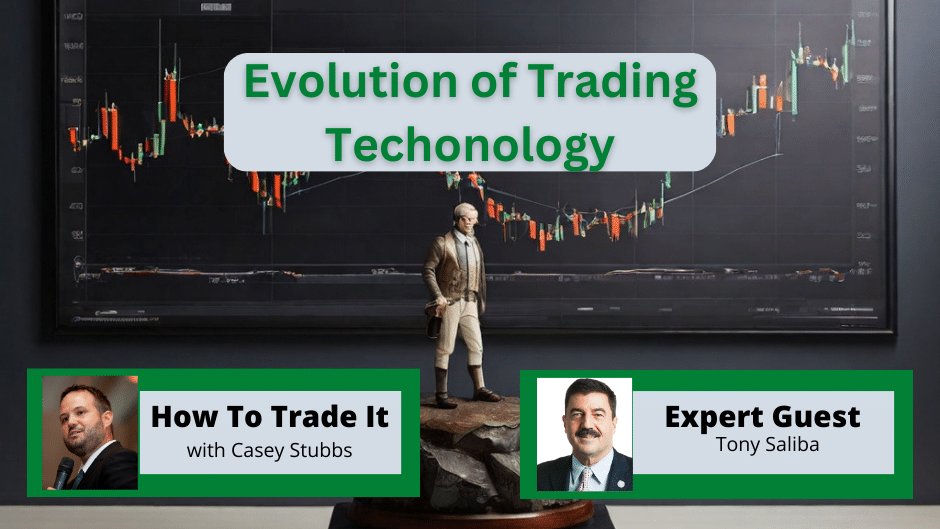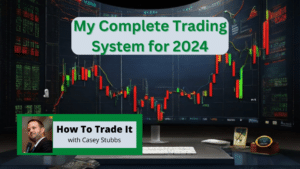The Evolution Of Trading Technology: Tony Saliba Shares His Insights

In this conversation, Tony Saliba discusses his early adoption of computing power and the evolution of trading technology. He introduces Liquid Mercury, a company that provides fourth-generation trading tools for professionals, incorporating artificial intelligence (AI) and generative AI.
The potential impact of Bitcoin exchange-traded funds (ETFs) is explored, with the expectation that they will bring real crypto trading to the listed markets. Tony also introduces the Merc token, which offers discounts and rewards for institutional and individual investors. The conversation concludes with predictions of Bitcoin and the broader digital asset market.
Subscribe to How To Trade It
Key takeaways for Evolution of Trading Technology include:
- Computing power has played a crucial role in the evolution of trading technology, enabling individuals to trade more efficiently and effectively.
- Liquid Mercury is a company that provides fourth-generation trading tools for professionals, incorporating AI and generative AI.
- Bitcoin ETFs have the potential to bring real crypto trading to the listed markets, increasing liquidity and trading volume.
- The Merc token offers discounts and rewards for institutional and individual investors, providing additional value and incentives.
Evolution of Trading Technology Overview
The technology used for trading has undergone a significant change, moving from the loud and chaotic “open outcry” method of the past to the rapid algorithms used today. In the early days, traders used hand signals and ticker tapes, which resulted in slow execution and limited access to information.
The 70s and 80s saw the dawn of automation, with terminals, data providers, and early algorithmic pioneers paving the way for faster, more efficient markets. The 90s witnessed the electronic revolution, with ECNs challenging traditional exchanges and online brokers making trading accessible to the masses.
Now, we’re in the era of high-frequency algorithms, big data analysis, and mobile apps, where trades are executed in milliseconds and risk management tools are crucial. Looking ahead, personalization, AI-powered insights, and ethical considerations surrounding technology’s role in the markets are likely to shape the future of trading.
This ongoing evolution has democratized access, boosted efficiency, and fueled growth, but it also presents challenges like algorithmic fairness and data privacy. As technology continues to reshape the financial landscape, traders must adapt and leverage its tools while navigating these complex trends.
4 key points of the Evolution of Trading Technology
- From Open Outcry to Electronic Trading:
Before the 1970s, trading was conducted on physical exchange floors through a chaotic system of hand signals and shouts, known as “open outcry.” This was slow, error-prone, and limited to those with physical access to the exchange.
The introduction of electronic trading platforms in the 1970s revolutionized the process, enabling faster execution, reduced errors, and wider participation.
- Rise of Algorithmic Trading:
The 1990s saw the emergence of high-frequency trading (HFT) algorithms, which leverage sophisticated computer programs to execute trades in milliseconds based on complex algorithms.
HFT now dominates many markets, increasing efficiency and raising concerns about fairness and market manipulation.
- Democratization of Access:
The rise of online brokers and mobile trading apps in the 2000s made trading more accessible to individual investors than ever before. Now, anyone with an internet connection can participate in the markets from anywhere, anytime.
This has democratized access to financial opportunities but also highlights the importance of financial education and responsible investing.
- Big Data and AI in Trading:
In recent years, big data and artificial intelligence (AI) have begun to play a significant role in trading. By analyzing vast amounts of market data, AI algorithms can identify patterns and predict market movements, providing traders with valuable insights.
However, concerns remain about the potential for AI-powered manipulation and the “black box” nature of many algorithms.
The Evolution of Trading Technology
The future of trading technology holds great promise but is filled with uncertainties. Artificial intelligence (AI) is expected to play a significant role in the market, creating complex algorithms that respond to data, news, and social media trends.
The concept of personalized trading bots, designed by AI to meet individual financial needs, is introduced. However, the responsibility accompanying AI’s power is emphasized, as biases in training data could impact its decision-making.
The importance of human guidance in ensuring AI’s ethical and empathetic use is highlighted. It is noted that the distinction between humans and machines will become less clear, with AI serving as a valuable resource for providing insights and managing risks.
This technology-driven future promises a more accessible, efficient, and ethical trading landscape, provided that we approach its complexities with wisdom and a healthy dose of skepticism.
Why is the evolution of technology important?
The evolution of trading technology goes beyond mere flashy devices; there’s a revolution brewing. For markets, it means smoother flow, wider access, and tighter security.
For you, it’s sharper insights, smarter risk management, and maybe even a robo-advisor whispering wise trades in your ear. But with all this power comes responsibility.
Biases can lurk in algorithms, jobs can vanish, and cyber shadows loom. So, traders, pay attention! This tech-fueled future needs your voice to guide it toward fairness, sustainability, and a market where everyone wins, not just the machines.






